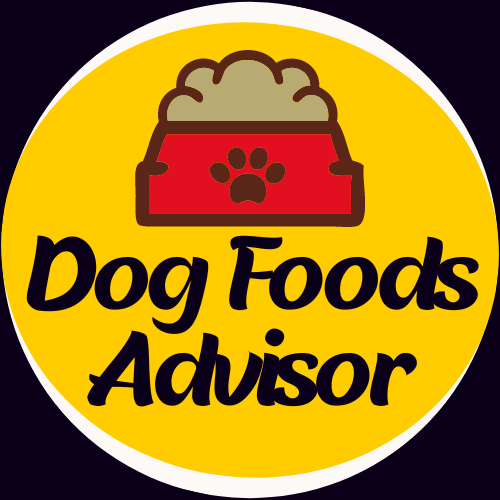Different types of dry dog food ingredients
Dog food is an essential part of our furry friends’ diet, but with so many options in the market, it can be challenging to choose the best one for them. Dry dog food is a popular choice among pet owners due to its convenience and longer shelf life.
However, not all dry dog foods are created equal as their ingredients can vary greatly. To help you navigate through this maze and make informed choices about your pup’s nutrition, we’ve put together this comprehensive guide on understanding different types of dry dog food ingredients!
Table of Contents
- Dry Dog Food Ingredients Overview
- Protein Sources in Dry Dog Food
- Carbohydrates Sources in Dry Dog Food
- Fats and Oils in Dry Dog Food
- Vitamins and Minerals in Dry Dog Food
- Artificial Additives and Preservatives in Dry Dog Food
- Sourcing Healthy and Sustainable Ingredients
Dry Dog Food Ingredients Overview
Dry dog food ingredients can be divided into two main categories: meat and plant-based ingredients. The meat in dry dog food can come from a variety of sources, including beef, chicken, lamb, pork, fish, and others. Plant-based ingredients include grains, fruits, and vegetables.
The vast majority of dry dog food contains some combination of meat and plant-based ingredients. The specific mix of ingredients varies from one brand to another and is often tailored to meet the needs of different types of dogs. For example, some brands offer foods that are specifically designed for puppies or senior dogs.
When choosing a dry dog food, it’s important to read the label carefully to understand the different types of ingredients that are used. This will help you select a food that meets your dog’s individual needs.
Protein Sources in Dry Dog Food
There are a variety of protein sources used in dry dog food. The most common source of protein in dry dog food is chicken. Other common sources of protein include beef, lamb, turkey, and fish.
Dry dog food typically contains between 18 and 28 percent protein. Protein is an important nutrient for dogs and is necessary for their growth and development. Dogs need more protein than cats and require a higher quality protein than what is found in most plant proteins. Animal proteins contain all the essential amino acids that dogs need for their health.
Carbohydrates Sources in Dry Dog Food
There are several types of carbohydrates found in dry dog food, each with their own benefits. The most common type of carbohydrate used in dry dog food is rice. Rice is a good source of complex carbohydrates and provides essential nutrients like vitamins and minerals. Other popular carbohydrates used in dry dog food include oats, barley, and wheat. These grains are also good sources of complex carbohydrates and provide your dog with additional nutrients and fiber.
The next type of carbohydrate used in dry dog food is potatoes. Potatoes are a starchy vegetable that is high in fiber and contains several vitamins and minerals. Sweet potatoes are another type of carbohydrate found in some dry dog foods. Sweet potatoes are an excellent source of complex carbohydrates, fiber, vitamins, and minerals.
The last type of carbohydrate found in dry dog food is peas. Peas are a legume that is high in protein and fiber. Peas also contain several vitamins and minerals that are essential for your dog’s health.
Fats and Oils in Dry Dog Food
Dry dog food typically contains small amounts of fats and oils. These ingredients are important for maintaining a healthy coat and skin, and for providing energy.
Most dry dog foods contain between 3% and 9% fat, with the higher end being more common in premium brands. The specific type of fat used in a dry dog food formula is not as important as the total percentage of fat.
Oils are a type of fat that are liquid at room temperature. They are a source of essential fatty acids, which are important for a healthy coat and skin. Dry dog foods typically contain between 1% and 5% oil.
The specific type of oil used in a formula is not as important as the total percentage of fats and oils. However, some pet owners prefer to see certain types of oils listed on the ingredient label, such as flaxseed oil or fish oil.
Vitamins and Minerals in Dry Dog Food
There are a variety of vitamins and minerals that can be found in dry dog food. The most common vitamins that are added to dry dog food include Vitamin A, B vitamins (such as thiamine, riboflavin, niacin, and pantothenic acid), vitamin E, and vitamin K.
Minerals that are typically added to dry dog food include calcium, phosphorus, potassium, magnesium, iron, zinc, copper, manganese, and selenium. Some manufacturers also add iodine and chloride to their dry dog foods. These vitamins and minerals are essential for your dog’s health.
- Vitamin A is necessary for vision and proper bone growth.
- The B vitamins are important for metabolism and energy production.
- Vitamin E is an antioxidant that helps protect cells from damage.
- Vitamin K helps with blood clotting.
- The minerals are important for various body functions including bone health, muscle function, fluid balance, and more.
When choosing a dry dog food, it is important to look at the ingredient list to see what vitamins and minerals are included. It is also important to choose a food that has been fortified with additional vitamins and minerals if your dog has any specific health needs.
Artificial Additives and Preservatives in Dry Dog Food
There are a variety of different types of artificial additives and preservatives that can be found in dry dog food. The most common type of additive is a preservative, which helps to keep the food fresh and prevents the growth of bacteria. Other common types of additives include flavorings, colors, and sweeteners.
Flavorings are added to dry dog food to make it more palatable for dogs. Common flavors include meat, cheese, and peanut butter. Colors are added to dry dog food to make it more visually appealing to owners. Sweeteners are sometimes added to dry dog food to make it more appealing to dogs with a sweet tooth.
Artificial additives and preservatives can have both positive and negative effects on dogs. Some dogs may be allergic or sensitive to certain additives, while others may find that the addition of artificial flavors makes the food more enjoyable to eat. Ultimately, it is up to the owner to decide whether or not their dog will benefit from eating dry dog food with artificial additives and preservatives.
Sourcing Healthy and Sustainable Ingredients
When it comes to sourcing healthy and sustainable ingredients for your pet, there are a few things to keep in mind.
- First, you’ll want to make sure that the ingredients are sourced from reputable suppliers who follow sustainable practices.
- Second, the ingredients should be free from harmful chemicals and pollutants.
- Third, the ingredients should be nutritious and provide your pet with the necessary vitamins and minerals for a healthy diet.
There are a few different ways to source healthy and sustainable ingredients for your pet. One way is to purchase organic pet food. Organic pet food is made with ingredients that have been grown without the use of synthetic pesticides or fertilizers.
Another way to source healthy and sustainable ingredients for your pet is to purchase local pet food. Local pet food is made with ingredients sourced from farmers and producers in your area who follow sustainable practices. Finally, you can also make your own pet food at home using healthy and sustainable ingredients.
Endnotes and Conclusion
Dry dog food ingredients are divided into two categories: meat-based and plant-based. Meat-based ingredients provide more protein and fat, while plant-based ingredients are typically lower in calories. The most common dry dog food ingredients include:
Meat-Based Ingredients:
- Beef: A good source of protein, essential vitamins, and minerals.
- Chicken: A high-quality source of protein that is easy to digest.
- Lamb: A nutrient-rich source of protein that can be beneficial for dogs with allergies.
- Turkey: A lean source of protein that is also a good source of B vitamins.
- Fish: A healthy source of omega-3 fatty acids, which can help improve skin and coat health.
Plant Based Ingredients:
- Potatoes: A starchy vegetable that provides complex carbohydrates for energy.
- Brown Rice: A whole grain that is a good source of fiber and essential nutrients.
- Oats: A whole grain that is rich in fiber and antioxidants.
- Barley: A whole grain that contains gluten, which can be beneficial for some dogs.
In conclusion, it’s important to choose a dry dog food based on your dog’s individual needs. If your dog has allergies, you’ll want to avoid ingredients they’re allergic to. And if you’re looking for a food that will help your dog maintain a healthy weight, look for a formula with fewer calories






One Comment